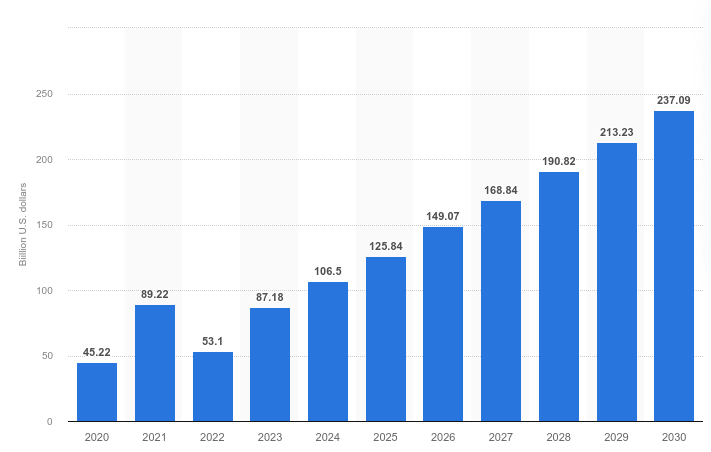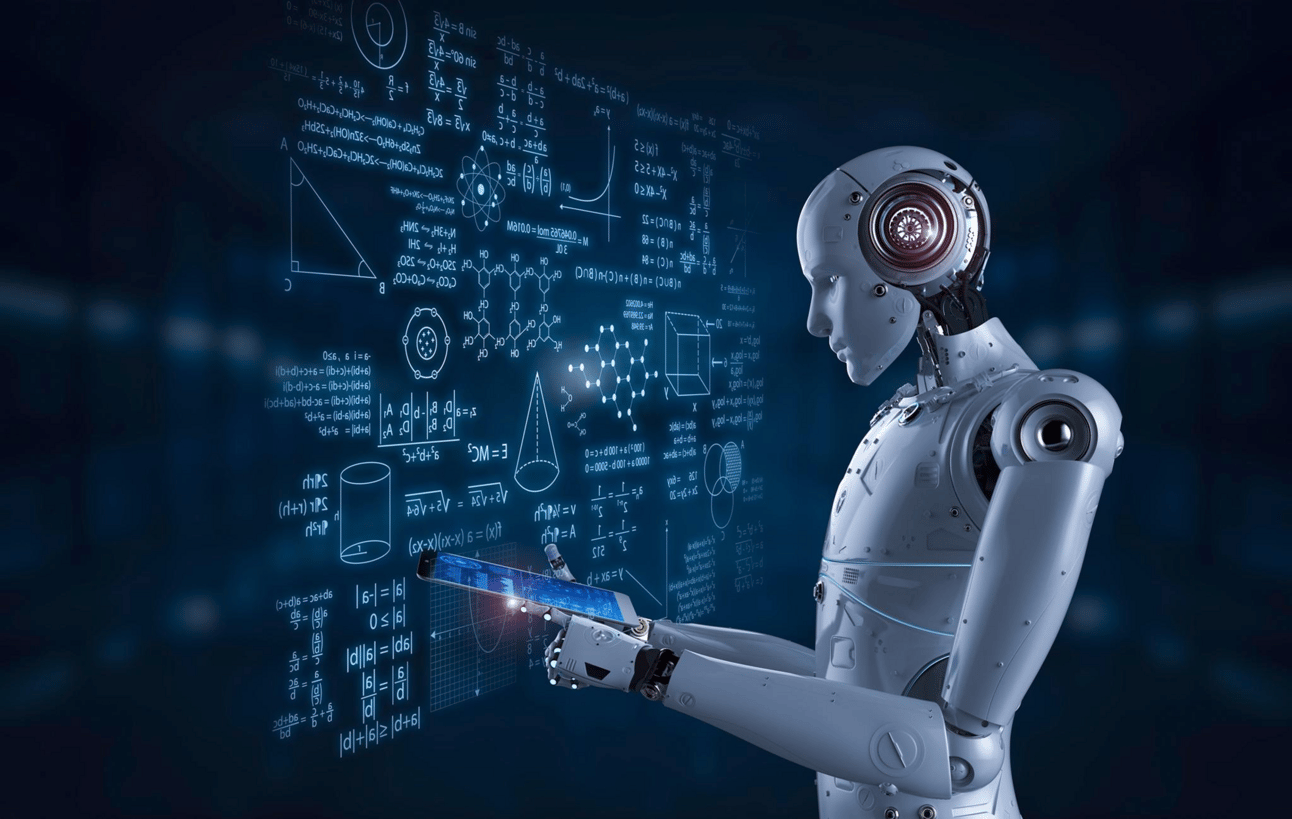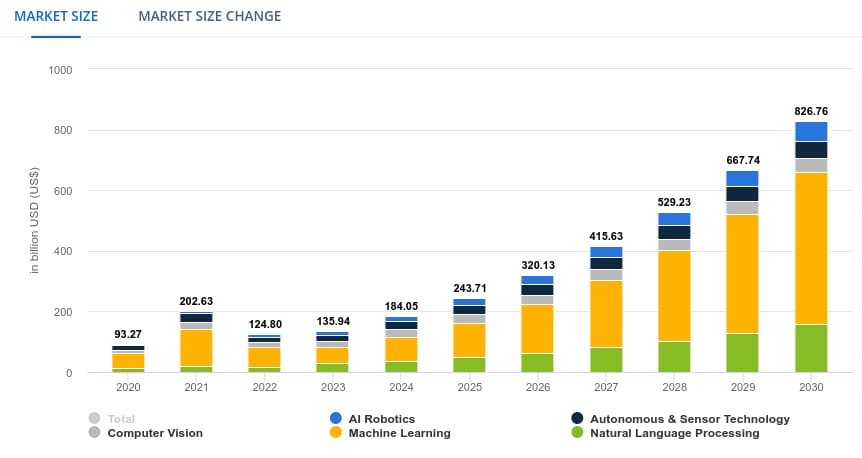- MacroVisor
- Posts
- What is Artificial Intelligence?
What is Artificial Intelligence?
A primer on AI as an investment theme
Artificial Intelligence (AI) refers to computer systems that perform tasks or make decisions designed to mimic human cognitive processes such as understanding, learning and problem-solving.

AI market size in the US over via Statista
AI applications can be broadly categorized into different subsectors: machine learning, natural language processing (NLP), robotics, computer vision, and others.
Key Subsectors within Artificial Intelligence
Machine Learning: This involves developing algorithms that enable computers to learn from data, identify patterns and make predictions without being explicitly programmed for a specific task. Machine learning applications are used in various sectors such as healthcare, finance, and retail. Examples include image recognition systems in facial or object detection, chatbots, fraud detection systems in financial institutions, and drug discovery platforms that help identify potential treatments.
Natural Language Processing (NLP): This subsector focuses on enabling computers to understand human language and use it for various tasks such as text mining, sentiment analysis, question answering, translation, and voice recognition. NLP applications are used in areas like customer service, content moderation, e-commerce, and virtual assistants.
Robotics: This subsector focuses on creating robots that can perform specific tasks autonomously. Robotic applications are used for a variety of purposes such as manufacturing, healthcare, defense, agriculture, and entertainment. Examples include humanoid robots, robotic surgery systems, drones, and self-driving cars.
Computer Vision: This subsector deals with enabling computers to understand images and videos. Computer vision applications are used in areas like autonomous vehicles, security surveillance, medical imaging, and consumer products like smartphones and cameras. Examples include image recognition systems, facial or object detection, and deepfake prevention technologies.

Why these Subsectors are Important to Understand
The subsectors within the AI industry are important because they represent different applications of AI technology. Understanding these subsectors enables investors to identify emerging trends in AI and potential investment opportunities based on specific needs and developments in each sector. It also helps investors to evaluate the market size, growth potential, and competition within each subsector.

How they Spell Potential Opportunities for Investors
Machine learning and natural language processing applications are being used in various sectors like healthcare, finance, and retail.
Furthermore, robotics, computer vision, and other subsectors within the AI industry have applications in various industries such as manufacturing, defense, agriculture, and entertainment.
Investing in AI’s leading subsectors can provide opportunities for diversification as different sectors may have unique growth prospects and risk profiles. For instance, machine learning applications may be more profitable in healthcare while robotics may be more relevant to manufacturing or defense industries.
Overall, understanding the subsectors within the AI industry can help investors identify potential opportunities for investment as trends take shape. By evaluating each sector based on market size, growth potential, and competition, investors can make informed decisions about where to allocate their capital.
During the months ahead we’ll identify some of the lesser known opportunities within AI’s leading subsectors that still have potential to be profitable long-term investments.
Reply